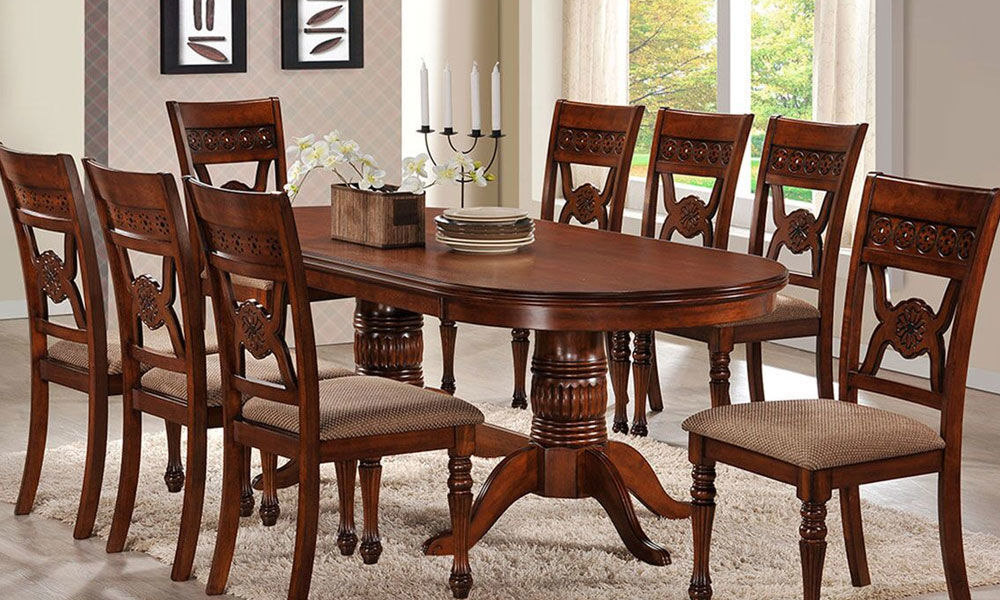Bonding over meals, a thing of past
 Bonding over meals, a thing of past
Bonding over meals, a thing of pastI have grown up in a typical Punjabi household. The place was Patiala. During the peak of any season, our oddly planned, 50's built house would be such a cacophony... the din created by us all... family members of all age groups and sizes. For a child, the craze in those days was that of play, play and more play interspersed with food, food and more food.
And this household had generosity writ all over it. A buzzing, bustling kitchen with Biji (grandmother) ruling the roost, her palpable charm and grace was always as warm as the sugar laden tea she offered you first thing, should you be our guest on any day, forget just a good day!
Sunday was the day for special indulgences where brunch was almost always outsourced Poori Chana Aloo (fat be damned) from Mota Halwai. Sonorous conversations happened
around the dining table. Eating together was therapeutic too because a lot of problems were solved across kitchen counters and dining tables.
We had it all. Our generation, and the ones before us. We may not have had the sophisticated gadgetry of today's times nor did we have the knowledge of the world on our finger tips, but we did have our own small happy world knit together. We sat at that table for hours, far beyond the meals, just talking and laughing. The benefits went beyond health. It was nourishment of the soul and the body alike.
The dining table was then the deciding table. Indeed. Nothing changed in my world as I graduated from my teens to my 20's except the fact that I was now married with children. Life in the 90's was simpler. Sunday was still an open house... a family and friends communion of sorts. Feasts became larger because the number of loved ones grew tremendously.
And since the humble mixie could no more churn out the humongous lassi portions fast enough, it was irrefutably replaced with a dedicated washing machine with its rattling rhythmic buzz, perched right within the large kitchen.
Yes, you heard it right. To churn lassi in bucketfuls. Sounds like privileges that are beyond the ordinary? Stuff that legends are made of probably! Even if it was just one big cauldron of home cooked mutton curry served with a "never-counted-never-ending" supply of tandoori rotis and raita, there was always more than enough for everyone.
Those were the days when the dining table had enough scratches on it to prove that it had been a witness to countless feasts and fights, drinks and the drunk, the romance of meals à deux, love and lovers, in different measures. We may not have had it all together, but together, we had it all. The dining table became the defining table. Indeed.
But that was then when life was comparatively simpler and eating together was the centrepoint of the day. The turn of the century turned the tables, literally and figuratively. The size of the family started to shrink as did the size of its generosity. Best friends and cousins were non grudgingly replaced with gadgets and communication was now happening via Skype and video chats. Visits became few and far fetched.
Orchestrating a family meal, day after day, was a chore that no one wanted to undertake and so the dining table witnessed a different kind of evolution. It became lonely. Just like the people who were eating on it some days. The table was now mostly used as a work station, the laptop siting on it, once too often.
Where once food garnered positivity and camaraderie, now the simple, neatly laid out daily meals were replaced with quick "on the go" breakfasts and "at work" lunches. Dinners saw less and less of "you have to eat all vegetables" kind of phrases and not many young mothers seemed to be sourcing recipes for Bottle Gourd or Panjiri anymore.
The parental engagement fostered around the table was fast depleting. Did we even need a full-fledged dining table? The practical acceptance of its now defunct utility and importance was directly related to the disappearance of the family size and family meals. It was no more the centre of distribution for anything at all.
And the dining table started to be the DIEning table instead. Indeed. My version of a happy home is as delineated through my own experiences, so I am less than amused by this change. It is here that my perceptions of the halcyon days gone by conflicts with today's reality.
When my children left home to pursue their dreams and lives, the first thing that felt really different was the dining table. My shared meals became limited to the Langar (community meals in gurdwaras) and social events. Food has always defined my existence and our mutual love for each other often evokes wistful sentiments of a once full family life.
With an increasing focus on eating food that benefits our health, we have definitely moved towards nutritionally better meals but from a psychological perspective, is eating alone healthy? Healthy enough? No amounts of supplements can infuse a rush of endorphins, like a happy chatter around the dinner table can. Once the unifier, the table stands alone today. When did it become just a piece of furniture really? Maybe it's time to create a home, all over again, around the diening table. One meal at a time.
And bring it back to life! After all there is nothing half as good as a household bonding over a meal.
- Aditti Ahluwalia
(The writer is a food blogger)
















